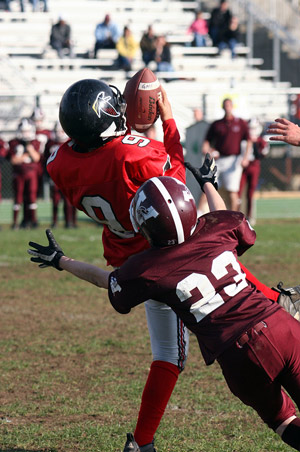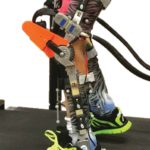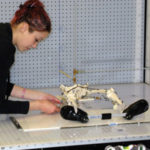 Experts call for age-specific options
Experts call for age-specific options
By Chris Klingenberg
With head trauma becoming increasingly worrisome in sports these days, a significant concern is whether the same protocols for clearing an athlete to return to sports should be used in both adults and children. Research from Cincinnati Children’s Hospital Medical Center suggests that the Balance Error Scoring System (BESS) may not be as useful for assessing postural sway after concussion in children as it is in the college athletes for whom it was originally developed.
“The BESS has a number of limitations when being applied to the pediatric population,” said Catherine Quatman-Yates, DPT, PhD, an assistant professor in the Department of Pediatrics and first author of the study. “First, it was designed as a sideline test and is best when you have preinjury baseline scores to compare to a postinjury performance. These are rarely available for children. Second, the balance challenges that the BESS utilizes are not specific to postinjury changes. Age- and maturation-related factors can also significantly affect a child or adolescent’s performance on the BESS, so it can be difficult to know if the errors are related to an injury or to other factors, even when baseline scores are available.”
Quatman-Yates and colleagues assessed the reliability and validity of the BESS for use with children and adolescents with a recent diagnosis of mild traumatic brain injury and a cohort of age-, sex-, and activity-matched healthy peers. There were 20 children (13 boys) in each cohort; the mean age was 13.24 years. Participants from the injured cohort were assessed within 14 days of injury (mean, 7.42 days).
The researchers found significant differences between the injured and control participants for single-leg firm stance, tandem firm stance, single-leg foam stance, and total BESS score. Injury status uniquely explained 18.9% of the variance for single-leg firm stance, 20.7% of the variance for single-leg foam stance, and 19.5% of the variance for total BESS score.
Actual between-group differences for the corresponding mean BESS scores were small, however, ranging from 1.1 (out of 10) for single-leg foam stance to 3.45 (out of 60) for total score. The differences were not great enough to fall outside the within-rater and between-rater minimal detectable change estimates of 7.3 and 9.4 points, respectively, for youth athletes. The findings were published in the September 2014 issue of The Physician & Sportsmedicine.
The Cincinnati researchers found that, within the injured cohort, younger children were more likely than older children to commit errors during the BESS test, which raises another potential concern specific to youth athletes: A greater potential for errors also means a greater potential for rater mistakes in observing and recording errors correctly.
Typically in college athletes, using the BESS as part of a postconcussion assessment is more valuable when an athlete’s scores can be compared with a previously performed baseline test. In youth athletes, however, that isn’t always possible, Quatman-Yates said.
“A lot of times with kids the problem is there is no baseline,” she said. “Another problem is that when the kids go through puberty it is harder to hold a baseline. Plus, all kids go through changes at different times.”
Tamara McLeod, PhD, ATC, professor and director of the Athletic Training Program at A.T. Still University in Mesa, AZ, agreed that postconcussion assessment protocols for children should indeed be different from adult protocols.
“Yes, I think postural control is an important part of the assessment piece and should be done in all athletes,” McLeod said. “We do know that postural control is usually worse in younger children as they have not fully developed their postural control systems, so getting a baseline for them is important to have an individualized healthy comparison. We have used the Balance Error Scoring System in children as young as eight years. I think balance tests need to be developed for children that are age-specific.”
Researchers and clinicians are starting to explore other options for balance testing in children. Quatman-Yates said she is seeing increased use of the Force Play Test in children, in which postural control is assessed while the kids stand with two feet together and have their eyes open and closed for two minutes. And McLeod and colleagues have submitted an abstract to the upcoming 2015 annual meeting of the National Athletic Trainers Association that shows even children have good reliability in postural control when measured using Sway, an app that evaluates stability and reaction time, she said.
Chris Klingenberg is a freelance writer based in Massachusetts.
Source:
Quatman-Yates C, Hugentobler J, Ammon R, et al. The utility of the balance error scoring system for mild brain injury assessments in children and adolescents. Phys Sportsmed 2014;42(3):32-38.





